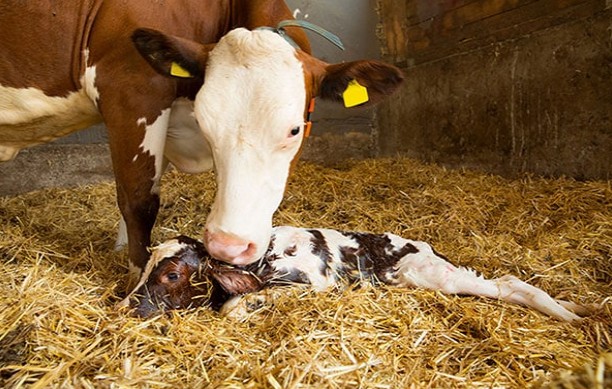Is your farm one of the many dairy farms that rely on the use of propylene glycol to supply energy to the cows and to prevent ketosis? Then you are probably watching the price developments on the market right now. Because they are exploding with rates of increase of over 250 % – if the product is available at all. The reason for the high prices is the Corona pandemic: propylene glycol is a by-product of paraffin production and since there are hardly any flights at the moment, the prices are rising accordingly and availability problems are occurring.
For companies that use propylene glycol, this can tear massive holes in their already tight budgets. This is also illustrated by our calculation model below.
The good news is: as sensible as the use of propylene glycol is, it is not without alternatives. We at JOSERA know what you can do to compensate for your cows’ energy deficit and effectively prevent ketosis. And the best thing for you is that this recipe for success works in the long term and is surprisingly inexpensive.
Table of Contents
- How does propylene glycol work as a feed?
- Correct use of propylene glycol
- Is propylene glycol worthwhile at all?
- Are there alternatives to propylene glycol?
- Overview of the different modes of action
- Calculation example of cost savings with DairyPilot
- Conclusion on the use of propylene glycol for cattle
How does propylene glycol work as a feed?
After calving, many farms struggle with the cows not getting into milk properly or, worse, clinical or subclinical ketosis occurring due to severe energy deficiency. Severe liver damage is often the result. Therefore, the use of energy-rich propylene glycol as feed is often recommended in the days before and after calving and sometimes beyond. But how does propylene glycol work?
Propylene glycol has an energy content of 16.8 MJ NEL (mathematically only 9.8 MJ NEL due to reduced gas formation) and is supposed to stabilise the cow’s metabolism. Propylene glycol is 100% digestible and greatly increases insulin secretion – even shortly after input. It also improves the ratio between acetic and propionic acid in the rumen and supports gluconeogenesis (i.e. the body’s own sugar and thus energy production), which promotes the energy supply of fresh milkers.
?? Did you know?
The chemically correct name for propylene glycol is 1,2-propanediol. There are also other names for the same substance, such as 1,2-propylene glycol, propylene glycol, monopropylene glycol or 1,2-dihydroxypropane.
Correct use of propylene glycol
For ketosis prophylaxis, 150 ml of propylene glycol should be administered per animal and day for two to three weeks before calving and, depending on the risk of ketosis (farm-specific), up to six weeks after calving. However, farmers are often faced with the problem that propylene glycol has a poor palatability for the cow and thus feed intake is negatively affected. Therefore, one should try to administer the propylene glycol via the concentrate or via the TMR.
Is propylene glycol worthwhile at all?
The high costs of such glucoplastic substances or of the above-mentioned finished concentrates are often cited as a reason not to use these products. However, their use is economically justified, as the following points are demonstrably improved:
- Problem-free start into lactation due to good condition and high appetite.
- Better fertility due to a clear oestrus, less culling and fewer cysts as well as a resilient energy metabolism.
- Longer life due to a healthy liver
- Less costs and labour for the treatment of ketosis and metabolic disorders.
Therefore, you should thoroughly consider the use of such “problem preventers” – especially if you have problems in this regard on your farm.
Are there alternatives to propylene glycol?
Yes! There are also alternatives to propylene glycol as feed. Especially in view of the massive increase in the price of propylene glycol (up to 250%!) and the increasingly poor availability of pure propylene glycol preparations, alternatives are increasingly in demand.
As a feed manufacturer with 80 years of experience, we know which products balance the energy deficit of your cows and effectively prevent ketosis. And the best thing for you is: this recipe for success works in the long term and is surprisingly inexpensive.
JOSERA has developed two feed supplements that can be used instead of propylene glycol to reduce energy deficits and safeguard the performance of the herd: JOSERA DairySafe and JOSERA DairyPilot. These are special feeds that use unique packages of active agents to increase performance, support the immune system and protect the liver, thus preventing metabolic disorders such as ketosis and inflammatory processes.
JOSERA DairySafe
DairySafe is used especially in the transit phase and at the start of lactation to prevent a negative energy balance and ketosis. With its innovative liver protection package, it supports the metabolism and resistance of fresh milkers. The liver is degreased and can perform at its full capacity. This pays off throughout the entire lactation.
The DairySafe liver protection package:
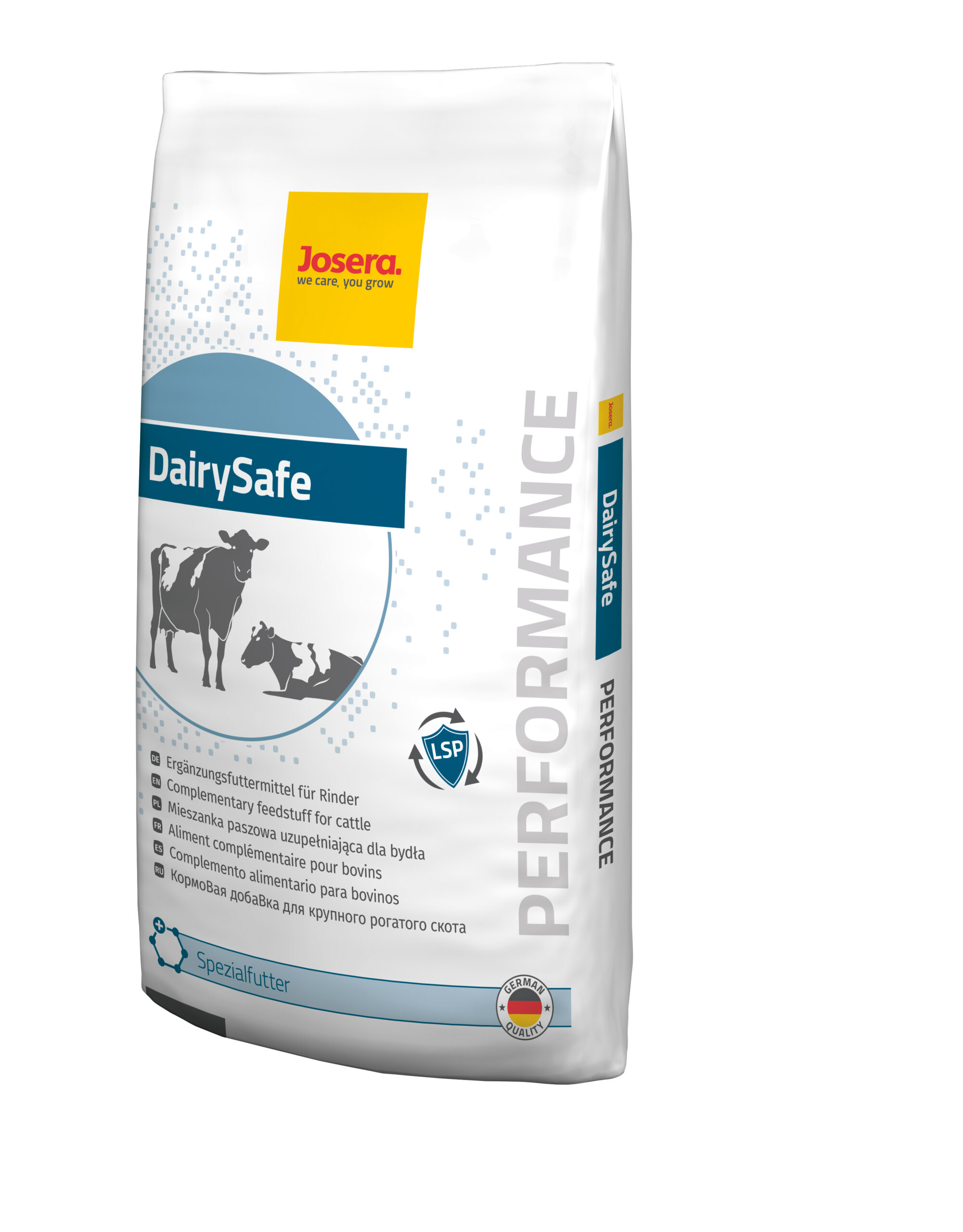

Active agent 1: Niacin
- increases the blood sugar level (like propylene glycol)
- additionally inhibits the breakdown of body fat

Active agent 2: L-carnitine
Optimises the use of free fatty acids, i.e. helps to convert food into energy and to use broken down body fat energetically

Active agent 3: Choline chloride
Degreases and protects the liver

Active agent 4: methionine
Is the first limiting amino acid for milk production and has a performance-enhancing effect.
→ Liver protection package: DairySafe works with 4 active substances in the metabolism – propylene glycol can “only” offer one.
JOSERA DairyPilot
The second supplementary feed from JOSERA that can be used instead of propylene glycol is DairyPilot.
DairyPilot reduces cell stress and prevents inflammatory processes, ensures and increases the milk yield of the herd, has a stabilising effect on the rumen and improves feed conversion.
DairyPilot works in two different ways:
- DairyPilot provides more nutrients an
- Through DairyPilot less energy is required for other metabolic processes.
→ In sum, the cow has more energy available for milk production or the immune system.
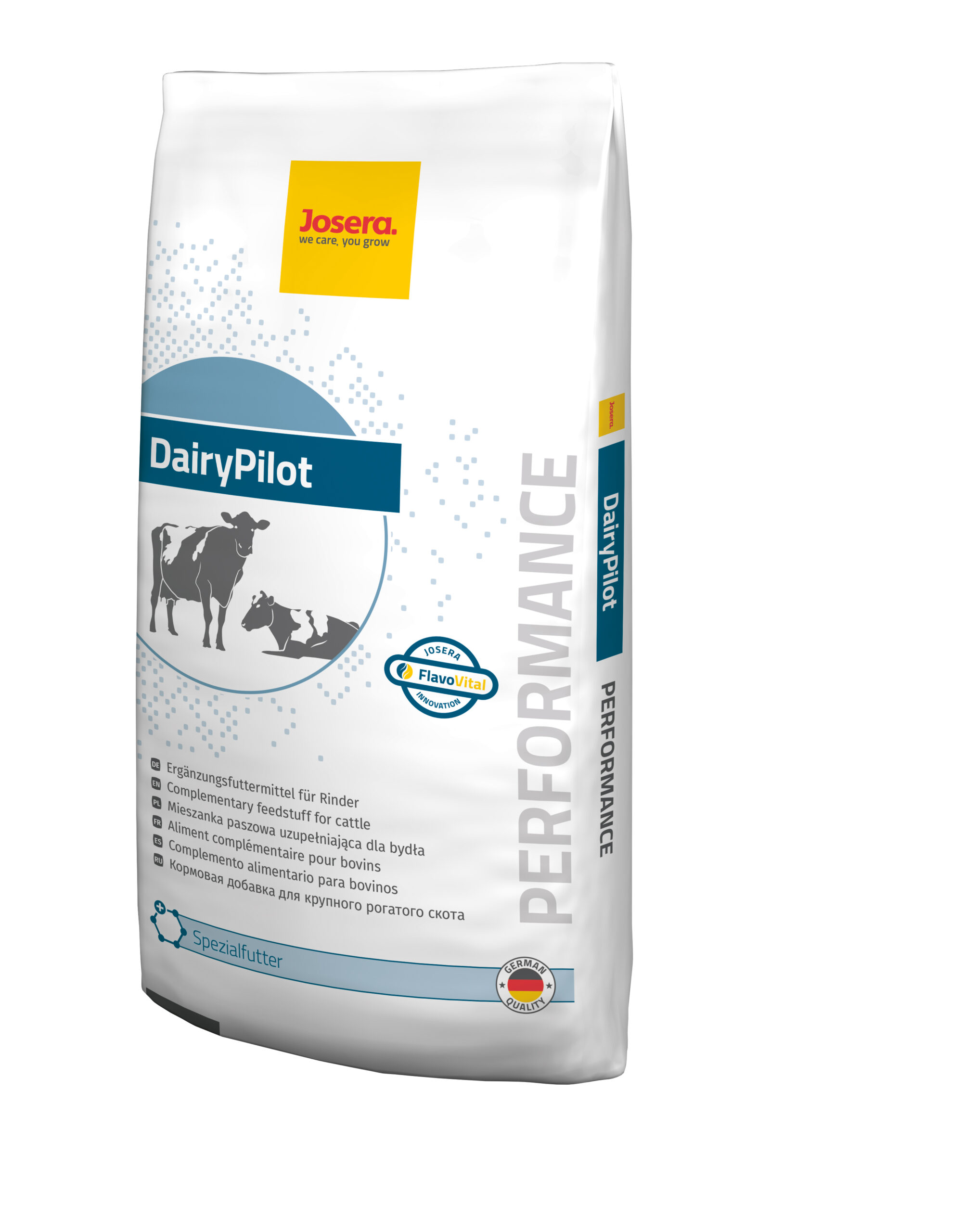
Attention!
The use of DairyPilot, DairySafe or similar supplementary feeds is not a “free pass” or a release from the obligation to supply the cows according to their needs, especially in the last third of lactation and in the dry period, also to avoid fatty degeneration.
A balanced ration with the best silage quality (using silage inoculants if necessary) throughout lactation is also the very best and cheapest source of energy that a farm manager and his cows could wish for.
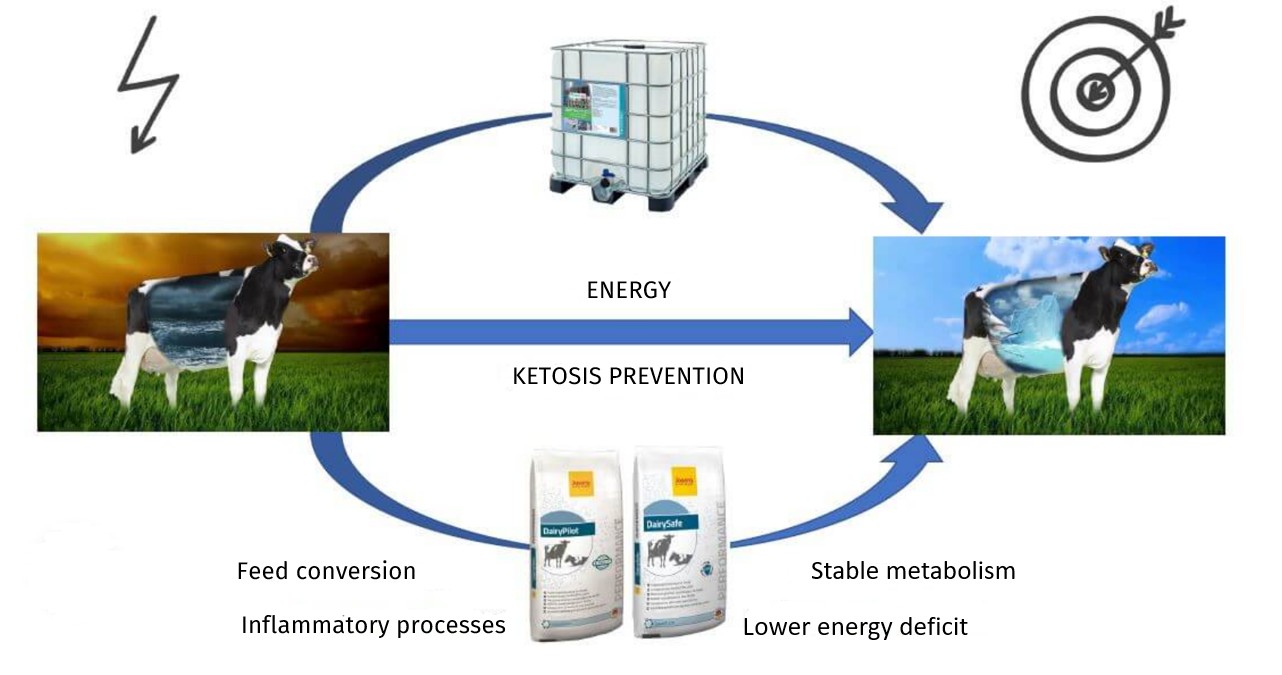
|
Compare the cost situation for the following dairy farms (100 dairy cows each): |
|
| Farm A uses propylene glycol (0.3 l on 50 days) for the energy balance of its cows at the beginning of lactation.
With an input quantity of 1,500 l, the farm previously paid 2,250 EUR for the additional energy supply for its cows. The current price development now results in additional costs of 3,000 EUR for the use of propylene glycol alone – and this with low or even questionable availability. The total costs for farm A are 5,250 EUR |
Farm B uses DairyPilot from JOSERA for the energy balance of its cows at the beginning of lactation. With an usage rate of 300 g/animal and day for 100 days, the farm needs 3 tons of DairyPilot at 1,200 EUR each. By using DairyPilot, farm B stabilises the metabolism of its cows and reduces the energy deficit in the long term, so that more energy is available for milk production. The total costs for farm B are: 3.600 EUR |
|
Which farm would you like to be? Do you have questions about the product and its use on your farm? Send us an email at export@josera.de or call us at 09371-940140! |
|
Conclusion on the use of propylene glycol for cattle
Propylene glycol and alternatives such as DairySafe and DairyPilot lead to a positive energy balance at calving and in early lactation. The antiketogenic effect reduces the risk of clinical or subclinical ketosis. Additional active agents strengthen the immune system, the liver and the metabolism.
The animals have an optimal start and usually get through the rest of lactation without any problems.
You might be interested in the following contents:
Beta-carotene-a key for fertile cows and healthy calves
In the winter months, fertility problems increasingly occur in many dairy herds. Still heat, returning to oestrus and re-insemination can accumulate.Follicular cysts and embryonic fruit death are also fairly common at this time of year.
Feed fat – any effect on metabolism?
Feeding around dry cows and fresh lactating cows poses a very special challenge. Especially in the last days before birth, a high energy density is needed in the food.
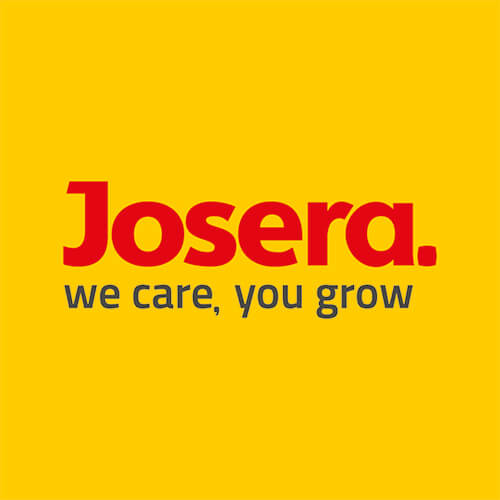





 (2 Votes, average: 3.50 von 5)
(2 Votes, average: 3.50 von 5)